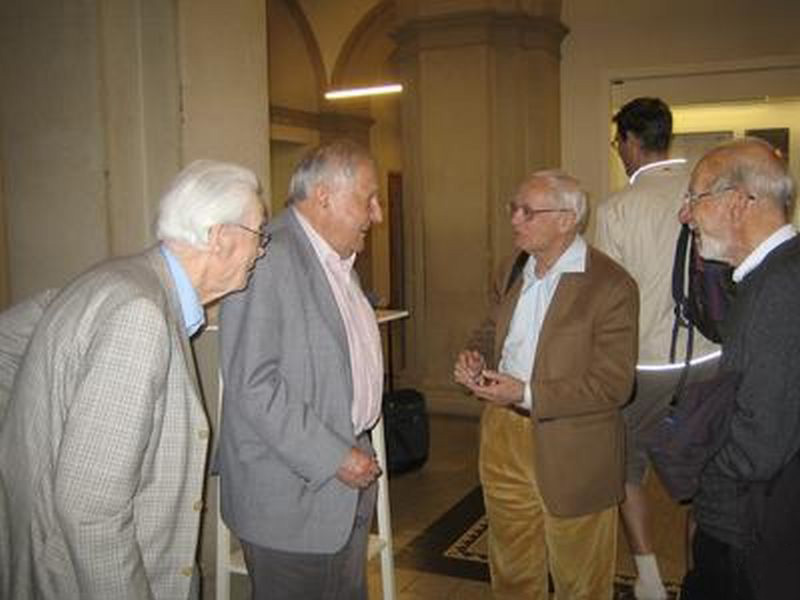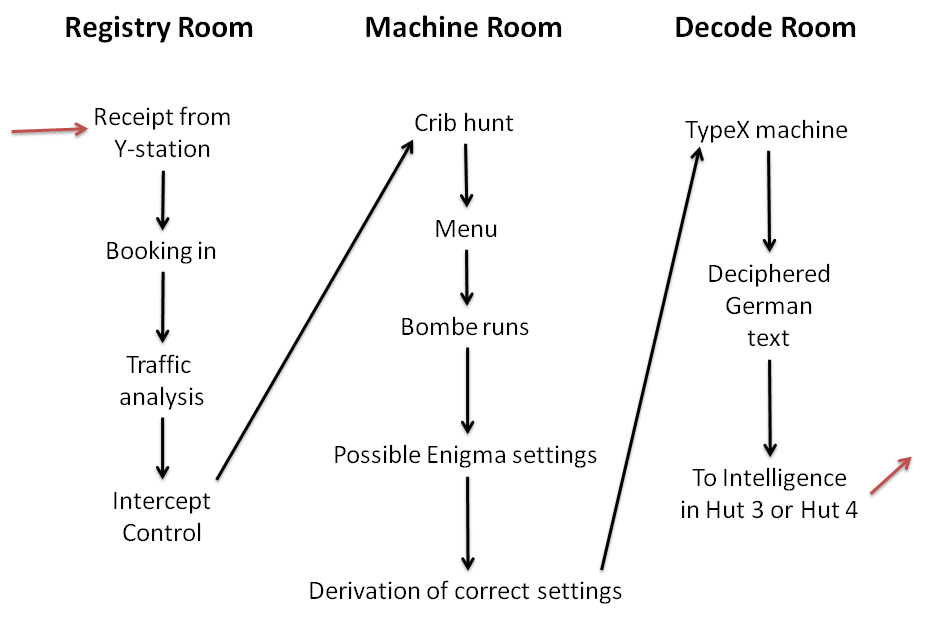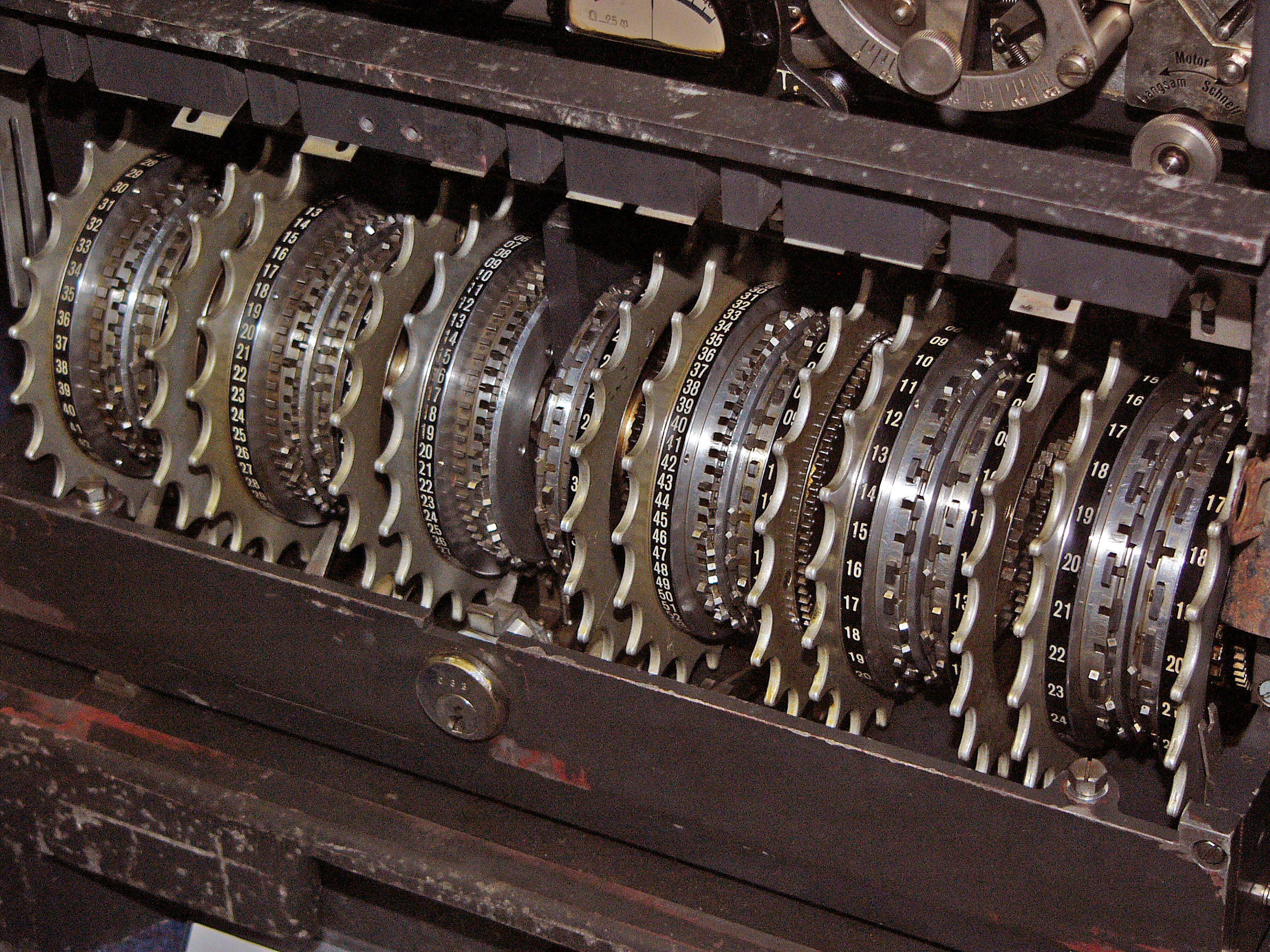|
Newmanry
The Newmanry was a section at Bletchley Park, the British codebreaking station during World War II. Its job was to develop and employ statistical and machine methods in cryptanalysis of the Lorenz cipher. It worked very closely with the Testery where a complementary set of operations were performed to complete the decryption of each message. Formally called the Statistical section, it was known as the Newmanry after its founder and head, Max Newman. It was responsible for the various Robinson machines and the ten Colossus computers. Some of the cryptanalysts had joint appointments with the Testery. in Initially in June 1943 the section was small: Good, Mitchie, two engineers and sixteen Wrens in a small hut. By the end of the war there were 26 cryptographers, 28 engineers, 273 Wrens with ten Colossi, three Robinsons, three Tunnies, plus twenty small electronic and electrical machines. See also * Fish * Allen Coombs * Tommy Flowers * Jack Good * Peter Hilton * Donald Michie ... [...More Info...] [...Related Items...] OR: [Wikipedia] [Google] [Baidu] |
Cryptanalysis Of The Lorenz Cipher
Cryptanalysis of the Lorenz cipher was the process that enabled the British to read high-level German army messages during World War II. The British Government Code and Cypher School (GC&CS) at Bletchley Park decrypted many communications between the ''Oberkommando der Wehrmacht'' (OKW, German High Command) in Berlin and their army commands throughout occupied Europe, some of which were signed "Adolf Hitler, Führer". These were intercepted non-Morse code, Morse radio transmissions that had been enciphered by the Lorenz cipher, Lorenz SZ teleprinter Rotor machine, rotor stream cipher attachments. Decrypts of this traffic became an important source of "Ultra (cryptography), Ultra" intelligence, which contributed significantly to Allied victory. For its high-level secret messages, the German armed services enciphered each Character (computing), character using various online ''Geheimschreiber'' (secret writer) stream cipher machines at both ends of a Electrical telegraph, telegraph ... [...More Info...] [...Related Items...] OR: [Wikipedia] [Google] [Baidu] |
Testery
The Testery was a section at Bletchley Park, the British codebreaking station during World War II. It was set up in July 1942 as the "FISH Subsection" under Major Ralph Tester, hence its alternative name. Four founder members were Tester himself and three senior cryptanalysts: Captain Jerry Roberts, Captain Peter Ericsson and Major Denis Oswald. All four were fluent in German. From 1 July 1942 on, this team switched and was tasked with breaking the German High Command's most top-level code Tunny after Bill Tutte successfully broke Tunny system in Spring 1942. Methods The Testery used hand decrypting methods to break Tunny traffic. Within one year of its foundation, the Testery had deciphered 1.5 million texts by these methods. By the war's end in Europe in May 1945, the Testery had grown to nine cryptanalysts, a team of 24 ATS, a total staff of 118, organised in three shifts working round the clock. The logical structure of the Tunny system was worked out by mathematician Bil ... [...More Info...] [...Related Items...] OR: [Wikipedia] [Google] [Baidu] |
Max Newman
Maxwell Herman Alexander Newman, FRS (7 February 1897 – 22 February 1984), generally known as Max Newman, was a British mathematician and codebreaker. His work in World War II led to the construction of Colossus, the world's first operational, programmable electronic computer, and he established the Royal Society Computing Machine Laboratory at the University of Manchester, which produced the world's first working, stored-program electronic computer in 1948, the Manchester Baby. Early life and education Newman was born Maxwell Herman Alexander Neumann in Chelsea, London, England, to a Jewish family, on 7 February 1897. His father was Herman Alexander Neumann, originally from the German city of Bromberg (now in Poland), who had emigrated with his family to London at the age of 15.William Newman, "Max Newman – Mathematician, Codebreaker and Computer Pioneer", pp. 176–188 in Herman worked as a secretary in a company, and married Sarah Ann Pike, an Irish schoolteacher ... [...More Info...] [...Related Items...] OR: [Wikipedia] [Google] [Baidu] |
Peter Hilton
Peter John Hilton (7 April 1923Peter Hilton, "On all Sorts of Automorphisms", ''The American Mathematical Monthly'', 92(9), November 1985, p. 6506 November 2010) was a British mathematician, noted for his contributions to homotopy theory and for code-breaking during World War II. Early life He was born in Brondesbury, London, the son of Mortimer Jacob Hilton (1893–1959), a Jewish physician who was in general practice in Peckham, and his wife Elizabeth Amelia Freedman (1900–1984), and was brought up in Kilburn. The physiologist Sidney Montague Hilton (1921–2011) of the University of Birmingham Medical School was his elder brother. Hilton was educated at St Paul's School, London."About the speaker"announcement of a lecture given by Peter Hilton at Bletchley Park on 12 July 2006. Retrieved 18 January 2007. He went to The Queen's College, Oxford in 1940 to read mathematics, on an open scholarship, where the mathematics tutor was Ughtred Haslam-Jones. Bletchley Park A war ... [...More Info...] [...Related Items...] OR: [Wikipedia] [Google] [Baidu] |
Bletchley Park
Bletchley Park is an English country house and Bletchley Park estate, estate in Bletchley, Milton Keynes (Buckinghamshire), that became the principal centre of Allies of World War II, Allied World War II cryptography, code-breaking during the Second World War. During World War II, the estate housed the Government Code and Cypher School (GC&CS), which regularly penetrated the secret communications of the Axis Powers most importantly the German Enigma machine, Enigma and Lorenz cipher, Lorenz ciphers. The GC&CS team of codebreakers included John Tiltman, Dilwyn Knox, Alan Turing, Harry Golombek, Gordon Welchman, Conel Hugh O'Donel Alexander, Hugh Alexander, Donald Michie, W. T. Tutte, Bill Tutte and Stuart Milner-Barry. The team at Bletchley Park devised automatic machinery to help with decryption, culminating in the development of Colossus computer, Colossus, the world's first programmable digital electronic computer. Codebreaking operations at Bletchley Park ended in 1946 and al ... [...More Info...] [...Related Items...] OR: [Wikipedia] [Google] [Baidu] |
Colossus Computers
Colossus was a set of computers developed by British codebreakers in the years 1943–1945 to help in the cryptanalysis of the Lorenz cipher. Colossus used thermionic valves (vacuum tubes) to perform Boolean and counting operations. Colossus is thus regarded as the world's first programmable, electronic, digital computer, although it was programmed by switches and plugs and not by a stored program. Colossus was designed by General Post Office (GPO) research telephone engineer Tommy Flowers based on plans developed by mathematician Max Newman at the Government Code and Cypher School at Bletchley Park. Alan Turing's use of probability in cryptanalysis (see Banburismus) contributed to its design. It has sometimes been erroneously stated that Turing designed Colossus to aid the cryptanalysis of the Enigma. (Turing's machine that helped decode Enigma was the electromechanical Bombe, not Colossus.) The prototype, Colossus Mark 1, was shown to be working in December 1943 and was ... [...More Info...] [...Related Items...] OR: [Wikipedia] [Google] [Baidu] |
Heath Robinson (codebreaking Machine)
Heath Robinson was a machine used by British codebreakers at the Government Code and Cypher School at Bletchley Park during World War II in cryptanalysis of the Lorenz cipher. This achieved the decryption of messages in the German teleprinter cipher produced by the Lorenz SZ40/42 in-line cipher machine. Both the cipher and the machines were called "Tunny" by the codebreakers, who named different German teleprinter ciphers after fish. It was mainly an electro-mechanical machine, containing no more than a couple of dozen valves (vacuum tubes), and was the predecessor to the electronic Colossus computer. It was dubbed "Heath Robinson" by the Wrens who operated it, after cartoonist William Heath Robinson, who drew immensely complicated mechanical devices for simple tasks, similar to (and somewhat predating) Rube Goldberg in the U.S. The functional specification of the machine was produced by Max Newman. The main engineering design was the work of Frank Morrell at the Post Off ... [...More Info...] [...Related Items...] OR: [Wikipedia] [Google] [Baidu] |
Fish (cryptography)
Fish (sometimes capitalised as FISH) was the UK's GC&CS Bletchley Park codename for any of several German teleprinter stream ciphers used during World War II. Enciphered teleprinter traffic was used between German High Command and Army Group commanders in the field, so its intelligence value ( Ultra) was of the highest strategic value to the Allies. This traffic normally passed over landlines, but as German forces extended their geographic reach beyond western Europe, they had to resort to wireless transmission. Bletchley Park decrypts of messages enciphered with the Enigma machines revealed that the Germans called one of their wireless teleprinter transmission systems "" ('sawfish') which led British cryptographers to refer to encrypted German radiotelegraphic traffic as "Fish." The code "Tunny" ('tuna') was the name given to the first non-Morse link, and it was subsequently used for the Lorenz SZ machines and the traffic enciphered by them. History In June 1941, the Briti ... [...More Info...] [...Related Items...] OR: [Wikipedia] [Google] [Baidu] |
Donald Michie
Donald Michie (; 11 November 1923 – 7 July 2007) was a British researcher in artificial intelligence. During World War II, Michie worked for the Government Code and Cypher School at Bletchley Park, contributing to the effort to solve " Tunny", a German teleprinter cipher. He founded The Turing Institute in Glasgow in 1982, alongside Peter Mowforth and Tim Niblett. In 1984, the institute worked under contract from Radian Corp to develop code for the Space Shuttle auto-lander. Early life and education Michie was born in Rangoon, Burma. He attended Rugby School and won a scholarship to study classics at Balliol College, Oxford. In early 1943, however, looking for some way to contribute to the war effort, Michie instead attempted to enrol on a Japanese language course in Bedford for intelligence officers. On arrival, it transpired that he had been misinformed, and instead he trained in cryptography, displaying a natural aptitude for the subject. Six weeks later, he was recr ... [...More Info...] [...Related Items...] OR: [Wikipedia] [Google] [Baidu] |
Bill Tutte
William Thomas Tutte (; 14 May 1917 – 2 May 2002) was an English and Canadian code breaker and mathematician. During the Second World War, he made a fundamental advance in cryptanalysis of the Lorenz cipher, a major Nazi German cipher system which was used for top-secret communications within the Wehrmacht High Command. The high-level, strategic nature of the intelligence obtained from Tutte's crucial breakthrough, in the bulk decrypting of Lorenz-enciphered messages specifically, contributed greatly, and perhaps even decisively, to the defeat of Nazi Germany. He also had a number of significant mathematical accomplishments, including foundation work in the fields of graph theory and matroid theory. Tutte's research in the field of graph theory proved to be of remarkable importance. At a time when graph theory was still a primitive subject, Tutte commenced the study of matroids and developed them into a theory by expanding from the work that Hassler Whitney had first develop ... [...More Info...] [...Related Items...] OR: [Wikipedia] [Google] [Baidu] |
Codebreaking
Cryptanalysis (from the Greek ''kryptós'', "hidden", and ''analýein'', "to analyze") refers to the process of analyzing information systems in order to understand hidden aspects of the systems. Cryptanalysis is used to breach cryptographic security systems and gain access to the contents of encrypted messages, even if the cryptographic key is unknown. In addition to mathematical analysis of cryptographic algorithms, cryptanalysis includes the study of side-channel attacks that do not target weaknesses in the cryptographic algorithms themselves, but instead exploit weaknesses in their implementation. Even though the goal has been the same, the methods and techniques of cryptanalysis have changed drastically through the history of cryptography, adapting to increasing cryptographic complexity, ranging from the pen-and-paper methods of the past, through machines like the British Bombes and Colossus computers at Bletchley Park in World War II, to the mathematically advanced comput ... [...More Info...] [...Related Items...] OR: [Wikipedia] [Google] [Baidu] |
World War II
World War II or the Second World War (1 September 1939 – 2 September 1945) was a World war, global conflict between two coalitions: the Allies of World War II, Allies and the Axis powers. World War II by country, Nearly all of the world's countries participated, with many nations mobilising all resources in pursuit of total war. Tanks in World War II, Tanks and Air warfare of World War II, aircraft played major roles, enabling the strategic bombing of cities and delivery of the Atomic bombings of Hiroshima and Nagasaki, first and only nuclear weapons ever used in war. World War II is the List of wars by death toll, deadliest conflict in history, causing World War II casualties, the death of 70 to 85 million people, more than half of whom were civilians. Millions died in genocides, including the Holocaust, and by massacres, starvation, and disease. After the Allied victory, Allied-occupied Germany, Germany, Allied-occupied Austria, Austria, Occupation of Japan, Japan, a ... [...More Info...] [...Related Items...] OR: [Wikipedia] [Google] [Baidu] |








